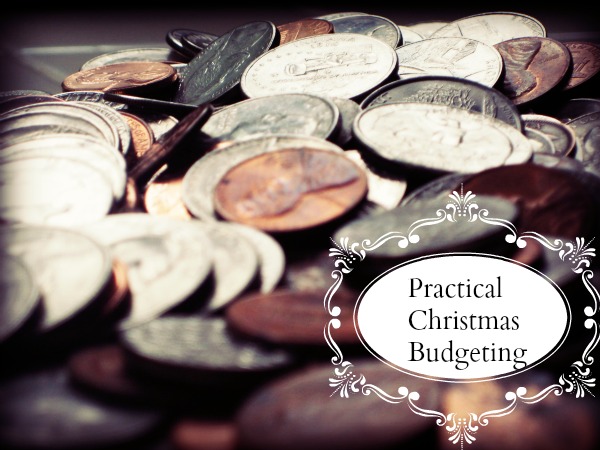That money talks, I’ll not deny,
I heard it once: it said, ‘goodbye’
―Richard ArmourA light purse is a heavy curse.
-Ben Franklin, Poor Richard’s Almanac
I try to be smart about Christmas spending. My oldest is 15, mind, so I’ve had plenty of time to work out the kinks, and this is what works for us.
A Dedicated Christmas Account
I have an ING savings account and an ING checking account. Both have no minimum. I have $25 a week automatically transferred to the savings account from our primary bank account. It collects interest all year.
Then, when I’m ready to go Christmas shopping, I transfer the money from the savings account to the checking account, and use that account’s card to pay for Christmas presents.
It’s easy, it works, it keeps us from running up a credit card bill in December.
Deal Sites
In the interest of not giving too much “stuff” I keep an eye on Groupon, Living Social, and the like for deals on restaurants, massages, classes, fun experiences. A great non-clutter gift idea for kids (plus no worries about dupes!); throw in an attached offer to babysit for others with kids of their own. You can buy these throughout the year, just be aware of the deal’s expiration date. (Of course, you can also buy actual stuff on those sites as well— I just use the money already accumulating in my ING Christmas account.)
Buy Less
Pare down your shopping list. Don’t feel bad about it, just make sure you discuss with anyone involved. You’d be surprised how many people would be perfectly happy to forego a gift if it means one less task during the holiday season.
Change Jar
I try to do all my in-real-life transactions with cash money. Change goes into the change jar. It adds up crazy fast.
In August we cash in the change jar and that funds meals eaten out and the kids’ spending money (think arcade, mini golf, ice cream). In December we cash it in again and the kids use that to buy the supplies they use to make presents for family members (sometimes supplemented by small gifts from a school Santa’s Workshop or a trip to the dollar store).
The Value of a Dollar
When I was a kid, all I ever really wanted was books. And the series I read usually went for $1.25, $1.95 per title. Occasionally I’d see something in the Woolworth toy aisle and I’d note the price stickered on the box… and save up my dollars and cents.
It’s different today. Walking through the toy section at Target can be overwhelming— and the prices are not always clearly marked. Our kids get so many toys and books and things all year long, and they have no real concept of cost. Want something? Put it on a wishlist and maybe someone will buy it for your birthday or Christmas present.
(Not knocking the wishlist, folks. My kids all have them, and so do I. They’re great for getting people what they want… not so much for teaching kids about saving, expenses or relative cost.)
My practical Christmas budget came about after many years of not realizing how much we were spending. I’d like to save my kids those painful, expensive lessons if possible. So what’s a good way to help our kids become financially capable in a practical, real-world way?
Virtual Piggy
Well, there’s a new wishlist in town. And it looks like a safe, smart way to give your kids a little freedom to (potentially) make ‘mistakes’ to learn from— while learning to save, budget and not threatening YOUR credit card balance.
It’s called Virtual Piggy. First, the parent registers their account, providing a preferred credit card and a shipping address. They then create an account for each child and set controls like approved merchants, transaction limits, whether every transaction needs parental approval or just those exceeding x amount or x transactions a week.
When a child shops, it’s within the parameters the parent has set. And— this is important— they log in using their own account name & password. All of the financial and shipping information is stored in the parent account. Your child is not giving out sensitive personal info on the internet.
Note from experience: it’s very easy for kids to think “oh, it’s only a 99 cent app” or “Mom won’t mind me buying a $5 book”… that can add up FAST with three kids not paying attention. Like, $116 in one month fast.
With Virtual Piggy, your child can balance spending and savings goals, visualize charity goals, and see their purchase history. They get to spend money in a real world way, but safely and within your limits.
The Virtual Piggy wishlist is a place to store those products they’d like to save up for— but parents can see it and invite others to view it as well for present-buying. (Or, perhaps, giving an earmarked amount towards a gift the child is saving for.)
Win Your Wishlist Sweepstakes
 ‘Tis the season for giving! Virtual Piggy is giving 10 kids (ages 6 and up) the contents of their Wishlist (value up to $500).
‘Tis the season for giving! Virtual Piggy is giving 10 kids (ages 6 and up) the contents of their Wishlist (value up to $500).
Get extra entries by sharing Win Your Wishlist on social media, and getting friends to register and join. Must enter by December 7th, so get moving! Start your wishlist now.
Would love to hear your Christmas budgeting ideas, and how you’re teaching kids about money.

Leave a Reply